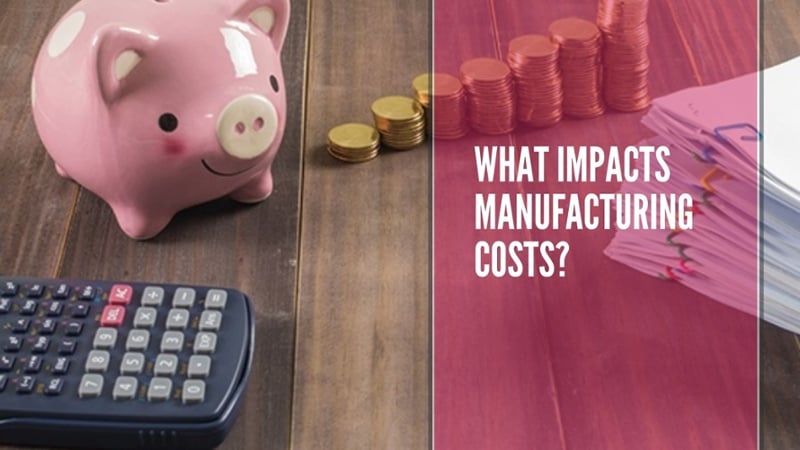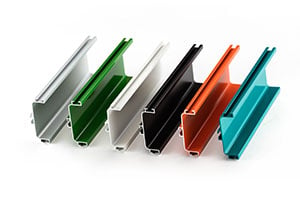What Impacts Manufacturing Costs?

Understanding what impacts manufacturing costs is key to bringing down the overall cost of your project, which is essentially what everyone would like to do.
There are a fair few deciding factors which will determine the cost of your project from materials used to the finish or fabrication you apply to your product.
We run through what could be impacting the cost of your manufacturing and how you can potentially lower it.
Material Costs
It might be an obvious one but the materials you choose to produce your product will impact the cost of your project. Although there are hundreds of places around the world you can source your materials from, costs globally are aligning meaning you can get a rough gage on how much your materials will cost.
If you want your product to be of good quality, it’s best not to invest in the cheapest materials as this typically leads to products lacking durability and quality.
Quality of End Product
In the world of manufacturing, you pay for the quality manufacturers can produce your products at. It may add time and cost to your project, but you want to invest in a manufacturer who invests in quality control and produces your product to its exact specifications, using only the best materials they can source.
Using a manufacturer who understands the importance of your product and invests in quality control may cost you more upfront but will save you time and money in the end as you will run into fewer problems.
Project Lead Time
Pushing your product through the manufacturing process quickly adds extra costs to your project, this is for a number of reasons such as the manufacturers having to juggle their resource management for both man-power and machinery.
If you need to push your product through quickly, be sure you can trust that your manufacture won’t compromise the quality of your product.
Volume of Order
Typically, the higher the quantity of your product you require, the less it costs overall. Low volume manufacturing usually costs more as ad hoc tooling can be expensive and it may not be beneficial to the manufacturer to run low volume lines.
However, it low volume manufacturing does offer other benefits such as it gives the company the flexibly to adapt their product design to reflect feedback they have gained from paying customers.
Lower volume manufacturing also means that the time to market will be a lot faster.
That being said, the cost per unit is highly dependant on the materials which are being used to produce your product.
Finishes & Fabrications Applied to the Product
Depending on the material you have chosen to produce your product, there many finishes which could be  applied. For example, if you have chosen aluminium to produce your product you can apply a number of finishes to your product, these include;
applied. For example, if you have chosen aluminium to produce your product you can apply a number of finishes to your product, these include;
Mechanical Finishes
Pre-treatment
Chemical Finishes
Anodising
Liquid Paint
Powder Coating
See what Finishing & Fabrication options we have available:
How to Lower Manufacturing Costs
After taking into consideration the potential costs mentioned above and the fact that not everyone has the budget to scale up production and produce a higher volume, there are ways you can lower the costs of manufacturing.
Review Your Design & Make Amendments
Changing your original product design may sound like a horrific idea, especially if you have worked so hard to get it this far, however, there may be things you can change which will lower the cost of manufacturing.
There are a number of things you need to take into consideration before steaming ahead with manufacturing;
Is the Material You’re Using Cost Effective?
Ask your supplier/manufacturer is there another method that could be used which will be of the same quality and standards as the original specified material.
If you’re using aluminium to produce your product, is the alloy you have selected the most beneficial?
Wall Thickness & Profile Symmetry
Is the wall thickness you have specified cost effective? If you are able to produce a profile which is symmetrical or has uniform wall thickness, this usually drives down the cost of manufacturing as extrusion dies are easier & quicker to produce. It also means that your profile is easier to extrude and is less likely to run into any problems further down the line.
Request a Prototype
No matter how confident you are with your design, it doesn’t hurt to get a prototype. Prototypes are a brilliant way of verifying your design and gaining feedback on how the end product is going to look. If you do happen to spot a flaw in your design, brilliant, you haven’t just forked out for the cost of manufacturing and can easily make the amendments needed.
You can order a free prototype directly from us. We’ve made it easy, fast and free. See more here.
Recommended Resources
We’re constantly adding more resources to our website to help you gain knowledge and further your understanding of the processes behind extruding your products.
We recommend taking a look at some other posts which may help you with your project;
5 Common Mistakes with Profile Design
How to calculate the weight of aluminium extrusion
6 Ways to join aluminium extrusions
How to reduce production costs
Get in Touch
If you would like to talk to someone regarding your new or existing project, get in touch. We’re happy to help people with their projects.
.png?width=150&height=70&name=BWC%20Logo%20(Custom).png)
